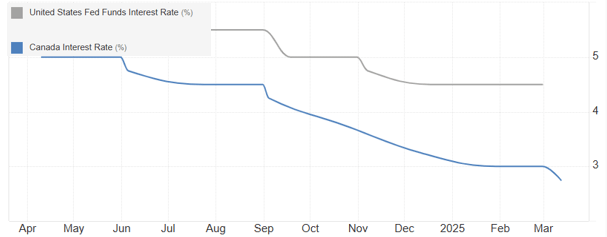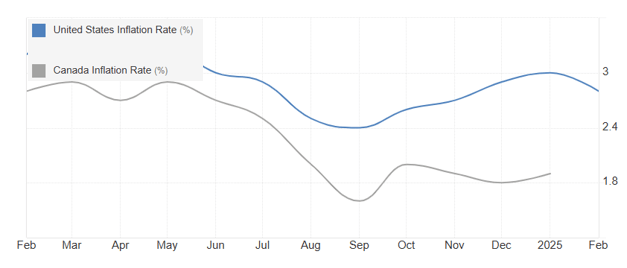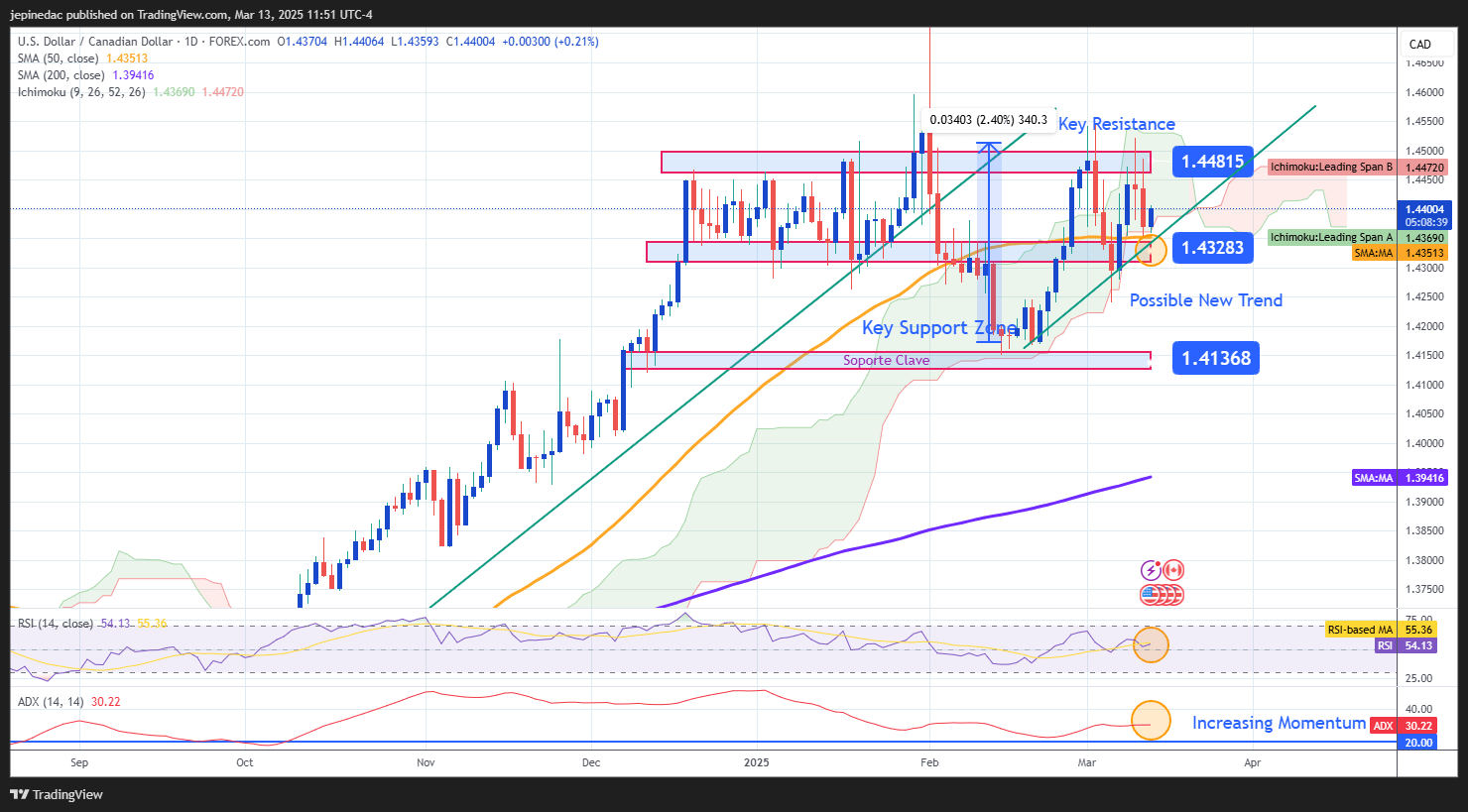
The USD/CAD maintains a slightly bullish bias, accumulating a gain of over 0.7% in the last five sessions, favoring the U.S. dollar. Currently, the CAD has shown new short-term weakness, which has persisted following the BOC’s decision yesterday. The threat of new tariffs from the White House has now materialized, which could extend the bearish pressure on the Canadian dollar.
BOC and FED
Yesterday, the Bank of Canada (BOC) announced its decision to cut the interest rate to 2.75%, representing a 25-basis-point reduction from the previous 3.00%. This measure was implemented as a cautious strategy to mitigate the potential impact of tariffs and aims to stimulate the Canadian economy by improving access to credit and lowering financial costs.
Initially, this decision did not significantly weaken the Canadian dollar, but as the session progressed, the CAD began losing strength, as a lower rate reduces its competitiveness against the U.S. dollar.
With this adjustment, the BOC's rate now stands at 2.75%, while the Federal Reserve (FED) maintains its rate at 4.5%, nearly twice as high. While the BOC has entered a rate-cutting cycle, the FED has remained firm, reinforcing the divergence between both economies.
BOC vs. FED Interest Rate Comparison

Source: Tradingeconomics
Another key factor is the difference in inflation between the two countries, which directly impacts their respective monetary policies. Canada currently reports an inflation rate of 1.9% (January data), which is below the BOC's 2% target, allowing for a more flexible rate approach. In contrast, U.S. inflation remains at 2.8% (February data), still above the FED’s 2% target, reinforcing its stance on keeping rates higher for longer.
U.S. vs. Canada Inflation Comparison

Source: Tradingeconomics
While the BOC has room to adopt a more accommodative stance, the FED continues to maintain its restrictive policy, widening the interest rate differential in favor of the U.S. dollar. This gap could drive investors to seek higher returns in U.S. bonds, reducing the attractiveness of the Canadian dollar.
With the FED’s rate at 4.5% and the BOC’s at 2.75%, this interest rate differential becomes a key factor in the strength of USD/CAD, supporting buying pressure. If conditions remain stable, this gap could further pressure the Canadian dollar in the medium term.
What About Tariffs?
As of yesterday, a 25% tariff on steel and aluminum imports from Canada has officially taken effect. U.S. Commerce Secretary Howard Lutnick has defended this measure, stating that it is necessary for U.S. economic growth.
Canada has responded with $20 billion in retaliatory tariffs against the United States. Additionally, Foreign Minister Mélanie Joly stated that Canada remains firm and will not withdraw these measures until a trade agreement is reached.
This trade war could have negative short-term effects on both economies. However, in terms of market confidence, the Canadian dollar may be more affected, while the U.S. dollar remains stronger, as investors seek stability. If this situation continues, buying pressure on USD/CAD is likely to increase further.
USD/CAD Technical Outlook

Source: StoneX, Tradingview
- Short-Term Trend: Since February 18, USD/CAD has maintained a bullish bias, marking higher highs. This trend could continue strengthening in the upcoming sessions, especially if trade uncertainty escalates.
- RSI: The RSI line has started to oscillate above the 50 level, indicating that buying pressure remains dominant over the past 14 sessions. If the RSI continues to move away from the neutral level, buying momentum could become more relevant in the short term.
- ADX: The ADX line remains above the neutral 20 level, suggesting that the recent price fluctuations have enough volatility to confirm a developing trend. If buying pressure persists, the bullish trend could strengthen further.
Key Levels:
- 1.44815 – Main Resistance: This level aligns with recent multi-month highs. A break above this level could significantly strengthen the short-term bullish trend.
- 1.43283 – Near-Term Support: This level coincides with the Ichimoku cloud zone and the 50-period moving average. It is a critical support level, as a break below it could invalidate the bullish outlook for USD/CAD.
- 1.41368 – Key Support: The lowest price level recorded in recent months. A drop below this zone could trigger a new bearish move in USD/CAD.
Written by Julian Pineda, CFA – Market Analyst






